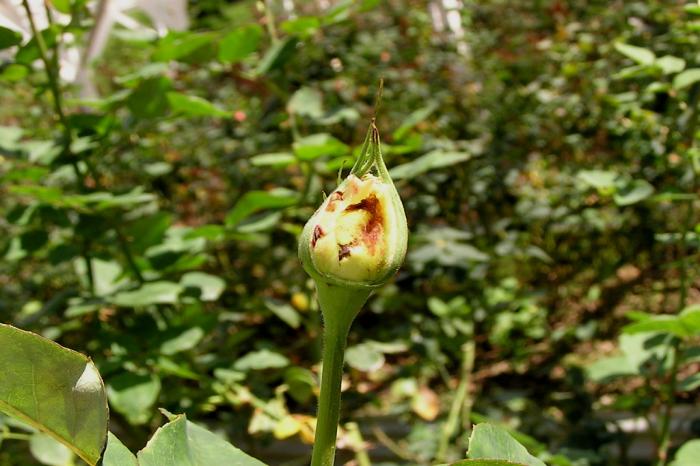Thrips are tiny, slender insects that can cause significant damage to rose bushes. They feed on the plant’s sap, leading to discolored and distorted foliage and flowers. Managing thrips effectively requires understanding their life cycle, identifying the signs of infestation, and implementing appropriate control methods. This article provides detailed steps on how to get rid of thrips on rose bushes and prevent future outbreaks.
Identifying Thrips Infestations
Before addressing thrips, it is crucial to correctly identify them and recognize the damage they cause. Thrips are small, typically less than 1/16 inch long, and may be yellow, brown, or black. They have elongated bodies and narrow wings.
Signs of Thrips Damage
Discolored Leaves: Leaves may show silvery or bronze streaks.
Distorted Flowers: Flower petals can become misshapen and may drop prematurely.
Scarring: You might notice tiny black specks, which are thrip excrement, on affected parts of the plant.
Non-Chemical Methods
Using non-chemical methods is often a safe and environmentally friendly way to manage thrips. Here are some effective approaches:
1. Remove Affected Plant Parts
Start by removing and disposing of heavily infested leaves and flowers. This helps reduce the thrips population and prevents further spread. Ensure you discard the removed plant parts away from your garden to prevent thrips from spreading to other plants.
2. Use Sticky Traps
Yellow or blue sticky traps can be effective in monitoring and controlling thrips. These traps attract and capture adult thrips, helping to reduce their numbers. Place traps around your rose bushes and check them regularly to monitor thrips activity.
3. Wash the Plants
A strong spray of water can help dislodge thrips from your rose bushes. Use a garden hose with a powerful spray setting to wash the undersides of leaves and other affected areas. This method can physically remove thrips and reduce their numbers.
4. Introduce Beneficial Insects
Natural predators can help control thrips populations. Introduce beneficial insects such as predatory thrips, ladybugs, and lacewings to your garden. These insects feed on thrips and can help keep their numbers in check. Purchase them from garden centers or online and release them near the affected rose bushes.
Chemical Methods
If non-chemical methods do not fully address the infestation, chemical treatments may be necessary. Always follow safety guidelines and instructions when using chemical products.
1. Insecticidal Soaps
Insecticidal soaps can be effective against thrips. These soaps work by breaking down the thrips’ exoskeletons and causing dehydration. Mix the soap with water according to the label instructions and spray it on the affected areas of your rose bushes. Ensure you cover both the tops and undersides of leaves.
2. Neem Oil
Neem oil is a natural pesticide that can help control thrips. It works by disrupting the life cycle of the pests and preventing them from reproducing. Mix neem oil with water as directed on the product label and spray it on your rose bushes. Neem oil can also help repel other pests and improve overall plant health.
3. Systemic Insecticides
Systemic insecticides are absorbed by the plant and can provide longer-lasting control of thrips. Apply these products according to the instructions, and ensure they are suitable for use on rose bushes. Systemic insecticides can help manage thrips from within the plant.
Preventive Measures
Preventing thrips infestations is key to maintaining healthy rose bushes. Implement these strategies to reduce the risk of future problems:
1. Regular Monitoring
Inspect your rose bushes regularly for signs of thrips and other pests. Early detection allows for prompt action and helps prevent severe infestations. Check the undersides of leaves and flowers, as thrips often hide in these areas.
2. Maintain Plant Health
Healthy plants are less susceptible to pest infestations. Provide your rose bushes with proper nutrients, water, and sunlight to keep them vigorous and resilient. Regularly fertilize and water your plants according to their needs.
3. Clean the Garden
Keep your garden clean and free of debris. Fallen leaves and plant material can harbor pests and contribute to infestations. Remove debris and weeds from around your rose bushes to reduce potential hiding spots for thrips.
4. Use Reflective Mulch
Reflective mulch, such as aluminum foil or silver plastic, can help repel thrips. The reflective surface confuses and deters the pests. Lay reflective mulch around the base of your rose bushes to help reduce thrips activity.
See also: The 5 Best Insecticides for Roses
Conclusion
Effectively managing thrips on rose bushes involves a combination of identification, treatment, and prevention strategies. By understanding the signs of thrips damage, using non-chemical and chemical control methods, and implementing preventive measures, you can protect your rose bushes from these pests. Regular monitoring and proper care are essential for maintaining healthy, beautiful roses and ensuring that thrips do not become a recurring problem. With the right approach, you can enjoy vibrant and thriving rose bushes throughout the growing season.


